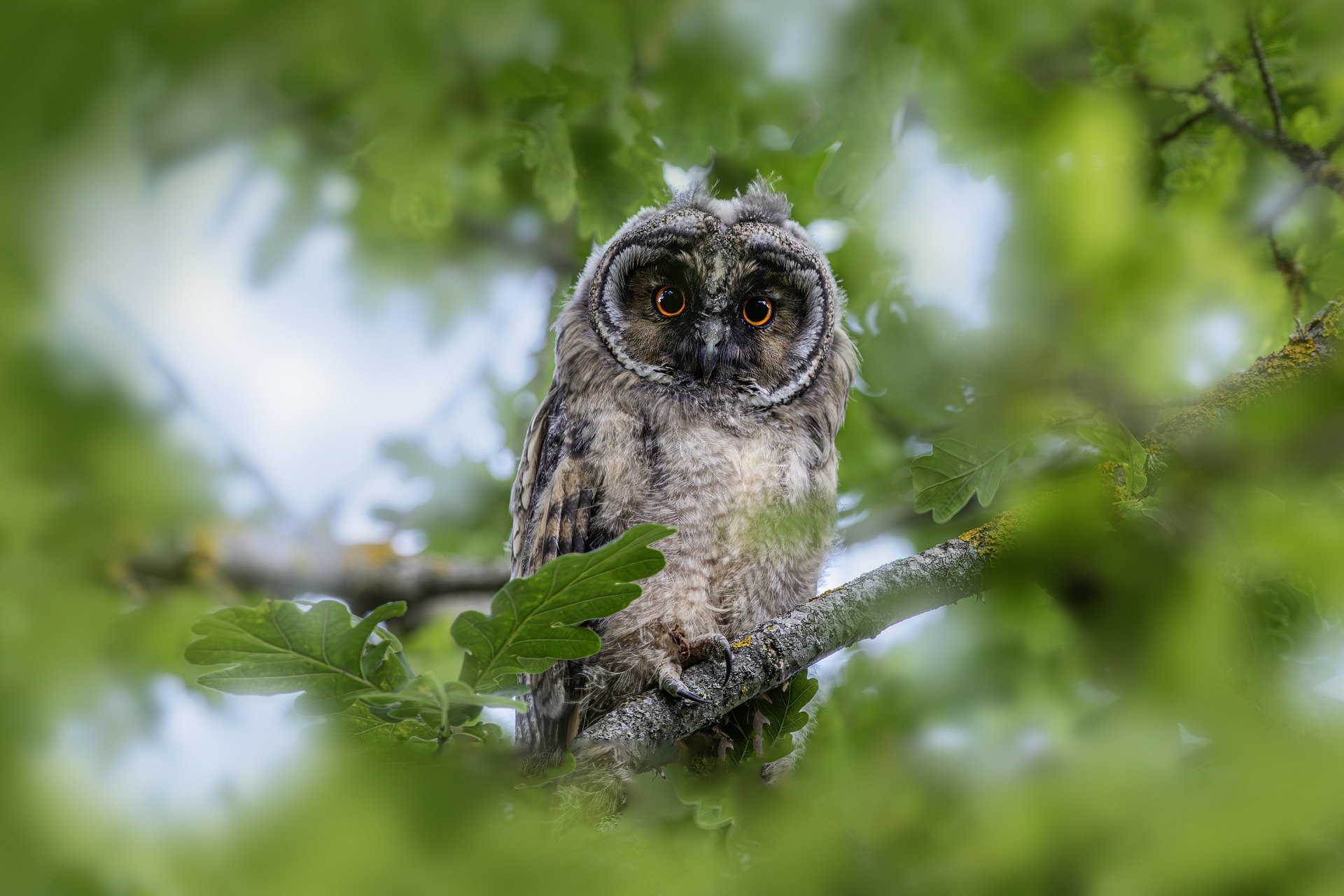The image depicts a Long-eared Owl perched on a branch, its distinctive ear tufts extending upwards like delicate antennas, giving it an almost whimsical appearance. The owl’s captivating eyes, large and round, are fixed attentively on its surroundings, reflecting its keen sense of sight and acute awareness. Its plumage, a blend of earthy browns and streaks of mottled patterns, provides excellent camouflage against the bark of the branch, showcasing nature’s masterful artistry in adaptation.
With a sleek, streamlined body and graceful posture, the owl exudes an air of elegance and poise. Its feathers are finely textured, each strand meticulously arranged to provide optimal insulation and silent flight—a testament to the bird’s remarkable adaptations for hunting in the cover of darkness.
Despite its name, the Long-eared Owl’s ear tufts are not its actual ears but rather feathers that enhance its camouflage and play a role in communication and expressions. Its true ears are asymmetrical, located on either side of its head, enabling it to pinpoint the slightest rustle of prey or the softest hoot of a potential mate.
As a creature of the night, the Long-eared Owl embodies mystery and wisdom, its presence in folklore and mythology spanning cultures worldwide. Revered for its nocturnal prowess and enigmatic allure, it serves as a symbol of intuition, stealth, and silent wisdom—a sentinel of the twilight realms where the secrets of the night unfold.
The Long-eared Owl (Asio otus) is a medium-sized owl species belonging to the family Strigidae, widely distributed across Europe, Asia, and North America. It’s renowned for its distinctive long ear tufts, which are actually feathers and not its ears. These tufts serve multiple purposes, including communication, camouflage, and possibly regulating body temperature.
Long-eared Owls typically have a wingspan of around 95 to 100 centimeters (37 to 39 inches) and weigh between 200 to 300 grams (7 to 10.5 ounces). Their plumage varies in color from light to dark brown, with intricate patterns that aid in their camouflage against tree bark. These owls possess large, striking orange eyes, which provide excellent night vision for their nocturnal hunting habits.
Primarily crepuscular and nocturnal hunters, Long-eared Owls prey upon small mammals such as mice, voles, and shrews, as well as small birds, insects, and occasionally amphibians. They hunt by silently gliding over open fields and woodlands, using their acute hearing to locate prey.
Long-eared Owls are often found in various habitats, including forests, woodlands, marshes, and grasslands, where they roost in dense foliage during the day, relying on their cryptic plumage for camouflage. They are known for their communal roosting behavior, often gathering in groups, particularly during the non-breeding season.
During the breeding season, Long-eared Owls typically nest in trees, though they may also use abandoned nests of other birds or even old squirrel dreys. They are known for their elaborate courtship displays, which involve mutual preening, vocalizations, and aerial acrobatics.
While not considered globally threatened, Long-eared Owls face various conservation challenges, including habitat loss, disturbance at nesting sites, and collisions with vehicles and structures. Conservation efforts focus on habitat preservation, mitigating human disturbances, and raising awareness about the importance of these fascinating birds in their ecosystems.
Views: 315
Subscribe to the newsletter:
